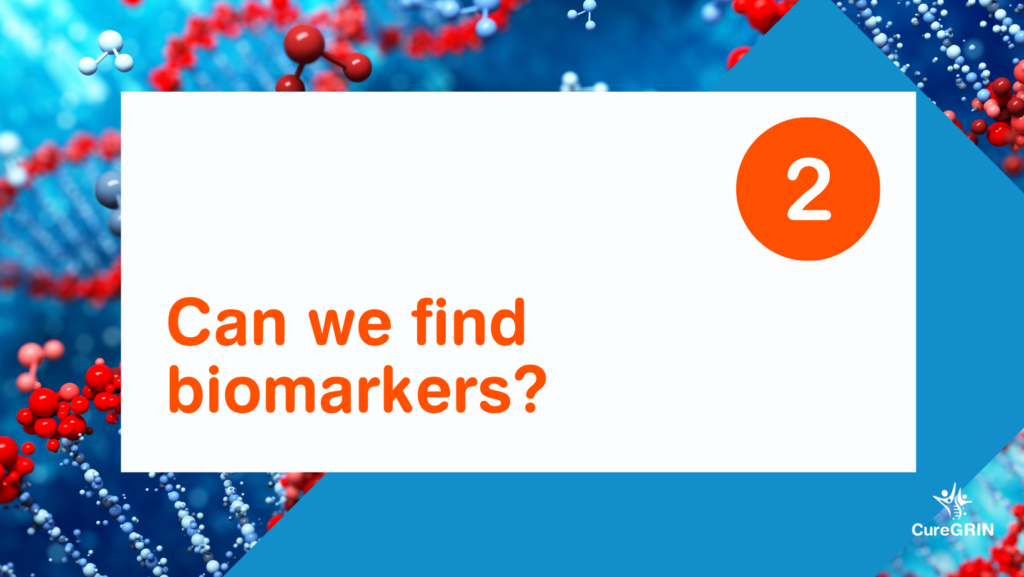Essential Question 2: Can we find biomarkers?
Share This Post

Each Thursday throughout the summer, CureGRIN will be sharing a blog post that summarizes one of the 10 “Essential Questions” that need to be answered in order to find cures and treatments for GRIN Disorder. These questions are a central component of our recently unveiled Research Roadmap titled, “Treat the Symptoms. Cure the Disease.” You can find links to all of these blog posts here.
Today, we focus on Essential Question 2: Can we find biomarkers?
What if we could find a biomarker that’s only present in the blood of people with GRIN? This might mean that the disease could be diagnosed through a simple blood test. Additionally, measuring that biomarker after a drug or gene therapy could also become an early sign that the treatment is working.
A “biomarker” is something biological, chemical, or physical in nature that can be measured in the body. Biomarkers can be important indicators of normal biological processes and disease state processes. They can also indicate certain responses to medicines or other treatments. Some common examples of biomarkers to think about are things like blood sugar, blood pressure, or the presence and size of a tumor. Blood sugar or blood glucose is a molecular biomarker that can be tested to help physicians understand someone’s risk for diseases like diabetes. Blood pressure is a physiological biomarker that can help physicians monitor the pressure in someone’s arteries when their heart beats and when it rests between beats to assess their risk for high blood pressure (hypertension) and other medical conditions. If someone has a tumor, different types of imaging tests like X-rays, CT scans, and MRI scans can be used as biomarkers to measure the size of a tumor and to see if a drug may have helped the tumor shrink in size. CureGRIN is interested in investigating if there are ways that GRIN and other GRI disorders change the blood, cerebrospinal fluid, or other biological functions that can be reversed with treatments/cures. We want to find biomarkers that may be able to measure things such as NMDAR levels in megakaryocytes in the bone marrow and platelets in the blood, devices that measure and estimate the likelihood of a seizure occurring, and so many other biological processes related to GRIN and other GRI disorders.
The U.S. Food and Drug Administration (FDA) groups biomarkers into seven different categories including diagnostic, susceptibility/risk, prognostic, predictive, response, monitoring, and safety. Diagnostic biomarkers confirm the presence of a particular medical condition in order to diagnose patients. Susceptibility/risk biomarkers are used to assess someone’s risk of developing a medical condition. Prognostic biomarkers are measured at the baseline (before treatment) and are important for assessing the likelihood of progression of a medical condition or other future events. A predictive biomarker helps to find people who are more likely to respond to a particular treatment. A response biomarker is used to measure changes in physiological levels in the body as a result of receiving treatment and provides early information about if a treatment might be working. Monitoring biomarkers are used repeatedly to assess the progression of a medical condition or a response to treatment. A safety biomarker is used to make sure that a treatment does not cause adverse effects. The FDA also notes the importance of the analytical and clinical validation of biomarkers. Analytical validation confirms that a biomarker test or device is specific, accurate, and precise, whereas clinical validation confirms that a particular biomarker performs as it is supposed to. CureGRIN plans to explore different types of biomarkers that can help doctors and researchers understand more about GRIN and other GRI disorders and to help determine if treatments result in measurable clinical improvements.
Therefore, the question of finding and characterizing biomarkers will be important for CureGRIN to partner with doctors and researchers to assess how GRIN and other GRI disorders progress, how patients respond to treatments and cures as they are developed and tested, and perhaps to even diagnose patients earlier.
Reference: FDA-NIH Biomarker Working Group. BEST (Biomarkers, EndpointS, and other Tools) Resource [Internet]. Silver Spring (MD): Food and Drug Administration (US); 2016-. Available here. Co-published by National Institutes of Health (US), Bethesda (MD).
Read more Posts
We’re living on a prayer that you will help us reach our goal!
Share This Post Share on facebook Share on linkedin Share on twitter Share on email Last month I wrote to tell you about our $250,000

Count Me In 2021
CureGRIN is looking for GRI Families to help us raise $250,000 to fund research for a cure for GRI Disorder.
